My First Foray into Intaglio Printmaking

Hard-Ground Etching
In 2009, I created a series of prints through a process of printmaking called intaglio. After a lifelong fascination with the black-and-white engravings of famous printmakers like Albrecht Dürer and M.C. Escher, I took a course in the hopes of learning how they produced their amazing works. Until then I had always created one-off drawings in pencil or ink, so I was interested in the idea of printmaking for the fact that a single work could be printed over and over. I always found it unfortunate that one-off drawings can only be shared with a single buyer, making them inaccessible in both price and availability for most people. Printmaking allows a single drawing to be reproduced hundreds of times, which puts the price level at a much more reasonable number.
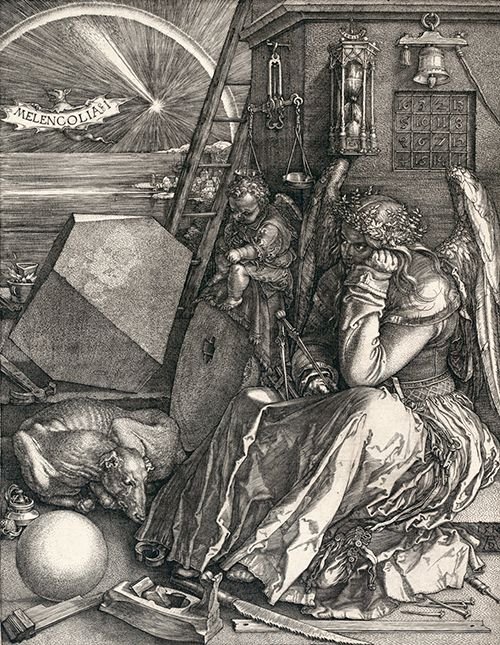
Albrecht Dürer
Intaglio printmaking is the process of etching a drawing into a flat brass plate, applying ink to the plate, and sending it through a printing press with a piece of paper. The pressure of the printing press pushes the ink from the plate onto the paper to create the final print. The style of intaglio that I became most interested in is called hard-ground etching. This specific process goes as follows (simplified for the sake of easy understanding):
- Cut a brass plate into the size you want.
- Apply a waxy substance called "hard-ground" in a thin layer on top of the plate.
- Draw your desired image by using a sharp tool to carve away the ground and expose the brass plate underneath.
- Place the brass plate in an acid bath so the acid can eat away at the brass in the specific places where your linework has exposed the metal.
- Remove from the acid bath and wash off all the remaining ground.
- Apply ink to the plate so it catches in the places where the acid has eaten away at the plate.
- Lay the plate face up on the bed of a printing press with a piece of damp paper on top.
- Send the plate and paper through the press, so the ink is transferred to the paper.
- Remove the paper and leave out to dry.
This process is explained in more depth in this helpful youtube video.
Reusing Plates
The aspect of printmaking that I found most intriguing is the fact that the brass plates can be used over and over. Taking that idea one step further, I had the realization that I could cut a single plate into multiple pieces and rearrange the pieces to create a different image each time I sent the plates through the printing press. I applied this method to three different projects, which I will share below. My first application of this idea was to draw an image of a face on a nine square grid of brass plates, and then rearrange those same brass plates to create the image of a landscape.
Obama / Landscape
The first print I ever made was a transformation of President Obama's face. The series of two intaglio prints involved splitting Obama's face into nine square pieces - in one arrangement the nine pieces are recognizable as his face, whereas in another arrangement the same nine pieces create a landscape scene. His upside-down chin makes a hill in the foreground and his shoulders come together to form a mountain in the background. The landscape is divided by multiple meandering rivers and sits below a dense cover of spiraling clouds (his cheeks and ears).
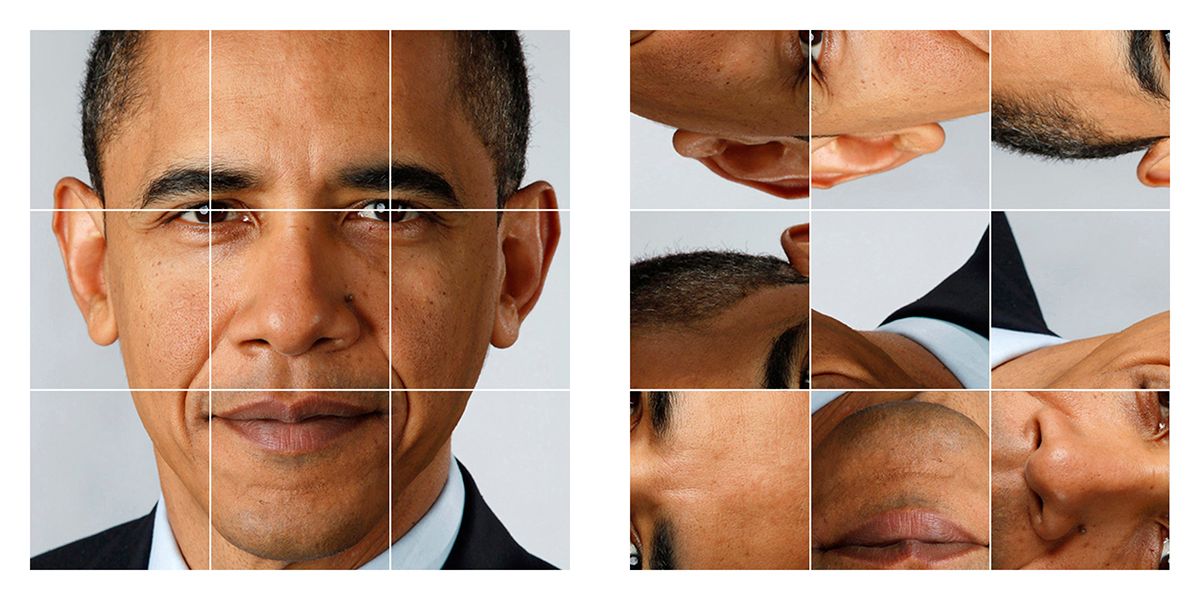
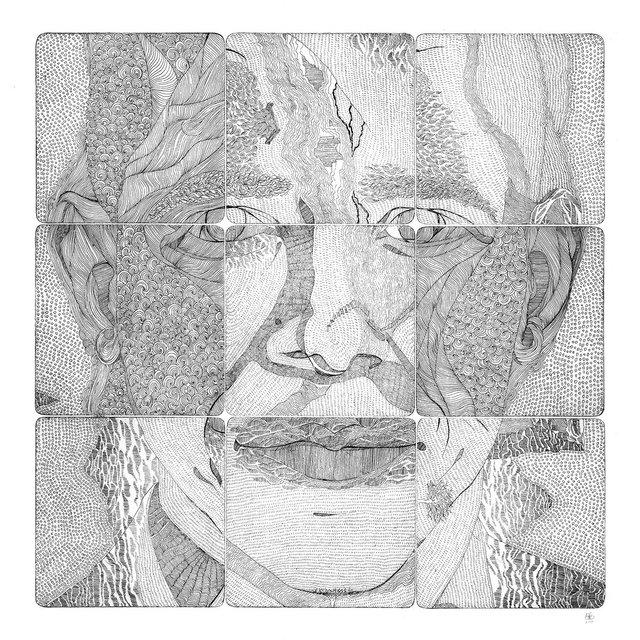
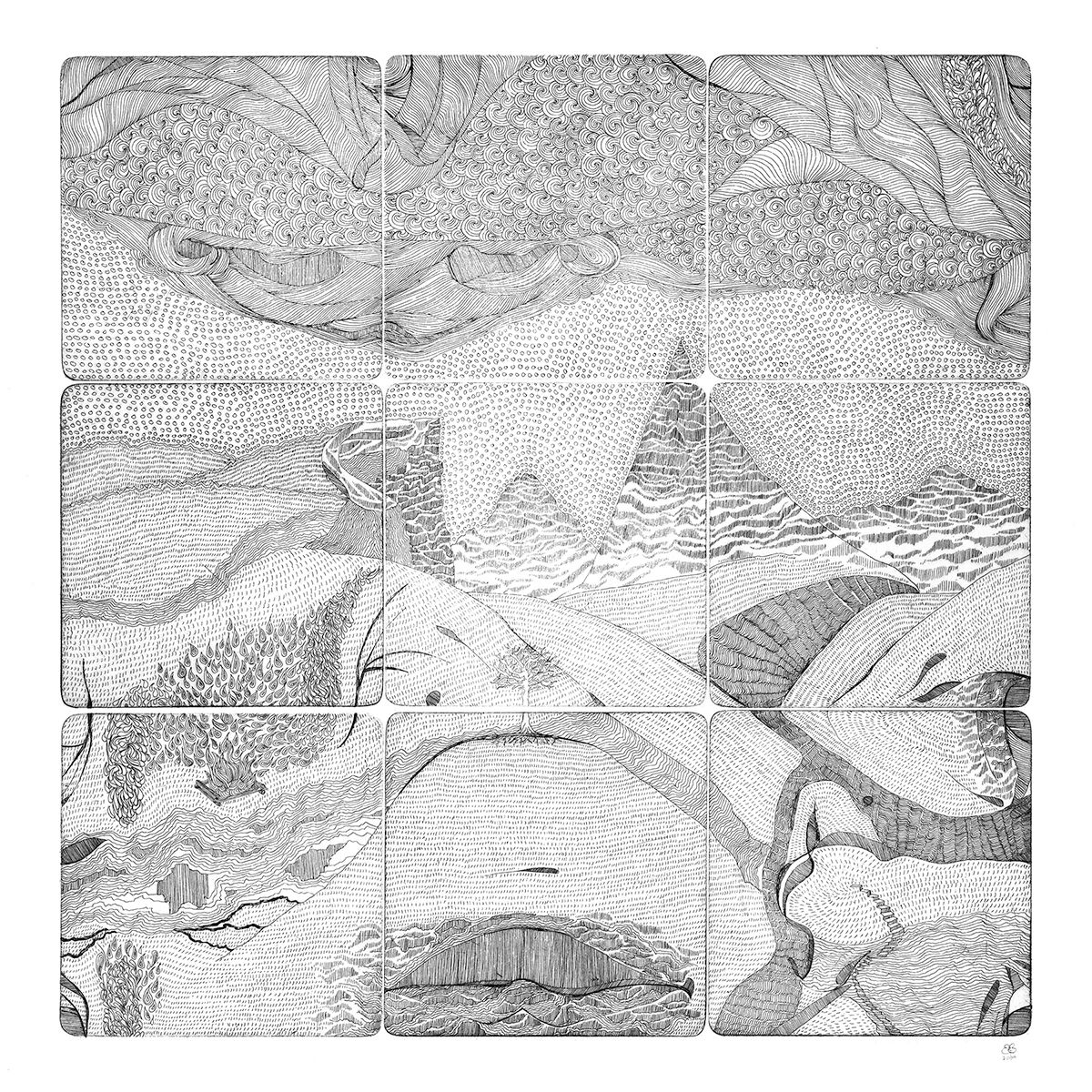
Happy Britney / Sad Britney
The second series of prints I created with this method of reusing and scrambling plates uses Britney Spears as my subject. To be honest I can't remember why I would have chosen her as my subject, but I believe at the time I was making these prints in 2009, Britney Spears had just had her meltdown where she shaved her head and appeared in the tabloids as a completely different person. I thought it would be interesting to use her face in the two very contrasting images of her persona. For this series I used only two plates - in one arrangement it shows Britney smiling and looking normal, and then by rotating the two plates you see her more intense scary face caught by the paparazzi.
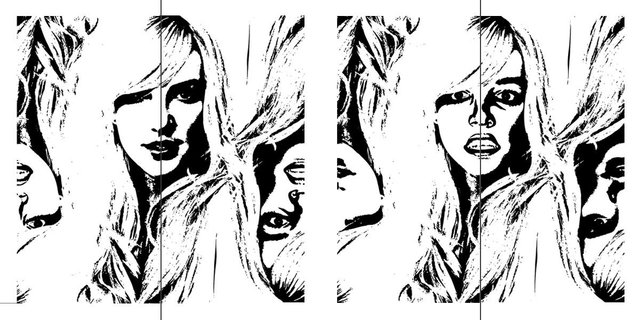
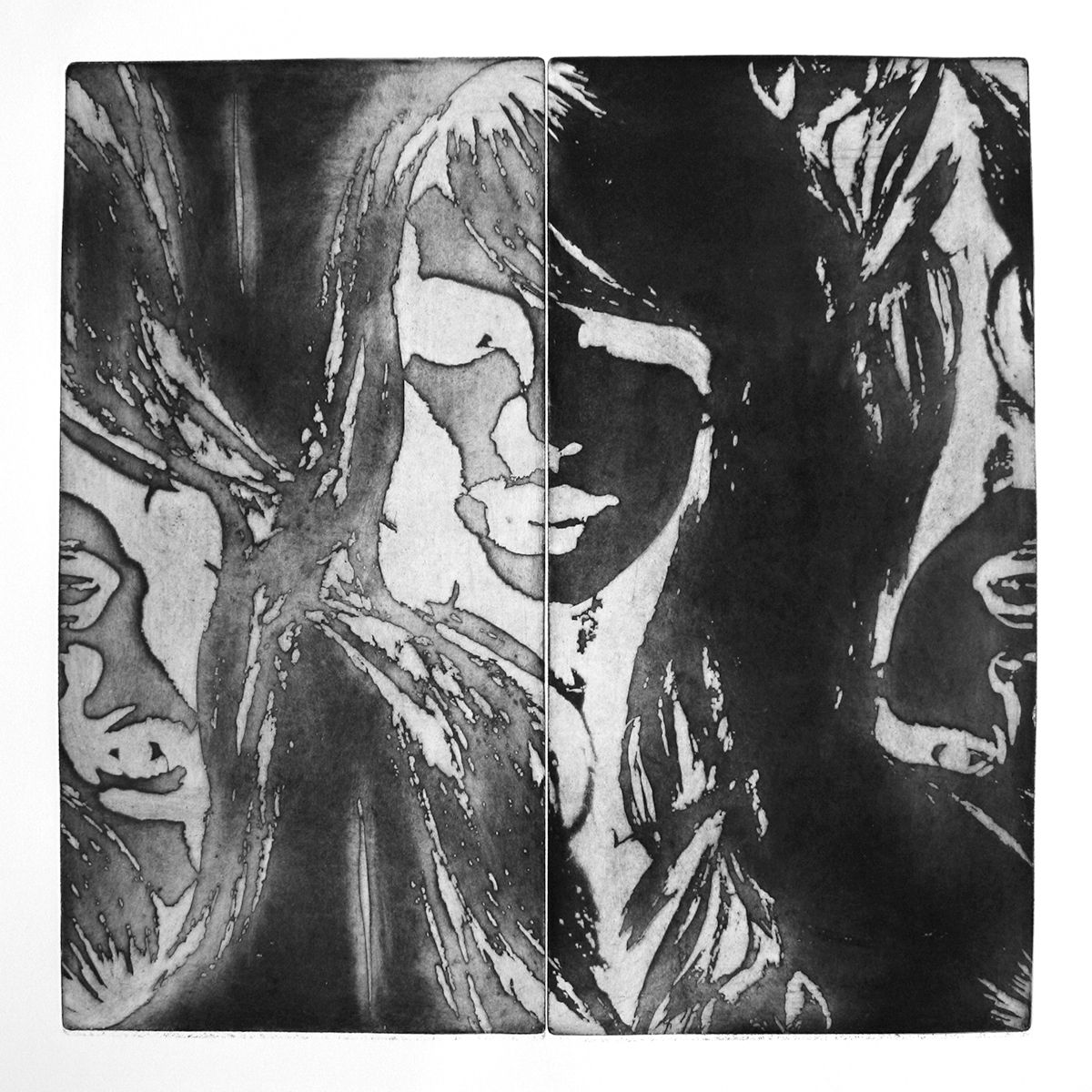
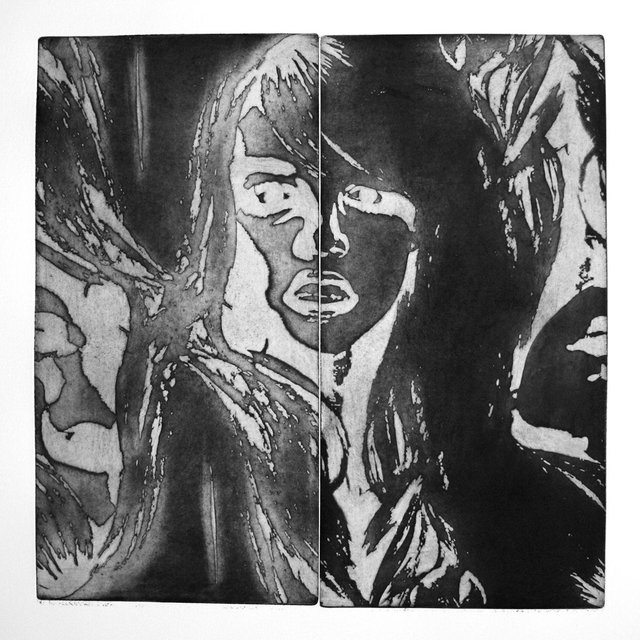
The / Golden / Section
The last series of intaglio prints I made were a rearrangement of the golden section. The golden section is an important ratio employed by the work of countless famous artists and architects, including Le Corbusier and Salvador Dali. The ratio has been used for centuries mostly because it is believed to create results that are aesthetically pleasing. For this three-part series of prints I took the spiral created by the golden section (also known as the golden ratio) and cut it up into its separate quarter-circle segments. For the third and final print I arranged the quarter-circle segments into a completely different, yet still aesthetically pleasing, design which has no visual relation to the golden ratio spiral I started with.
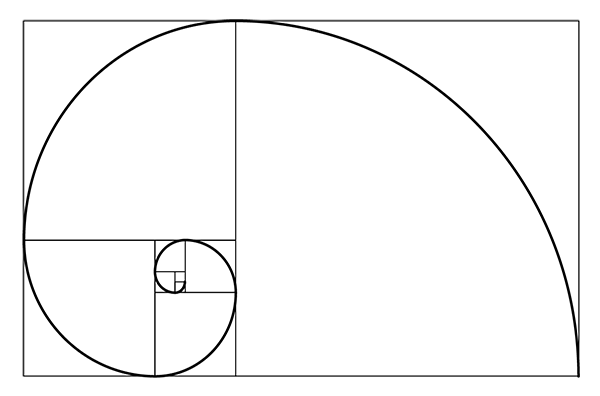
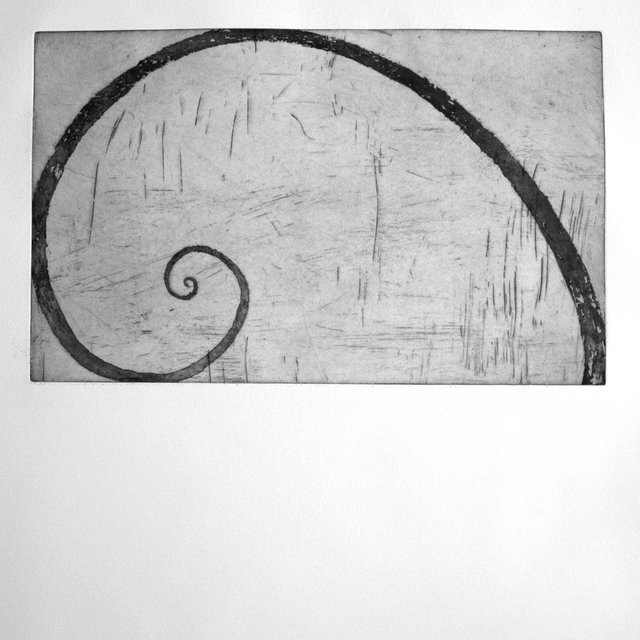
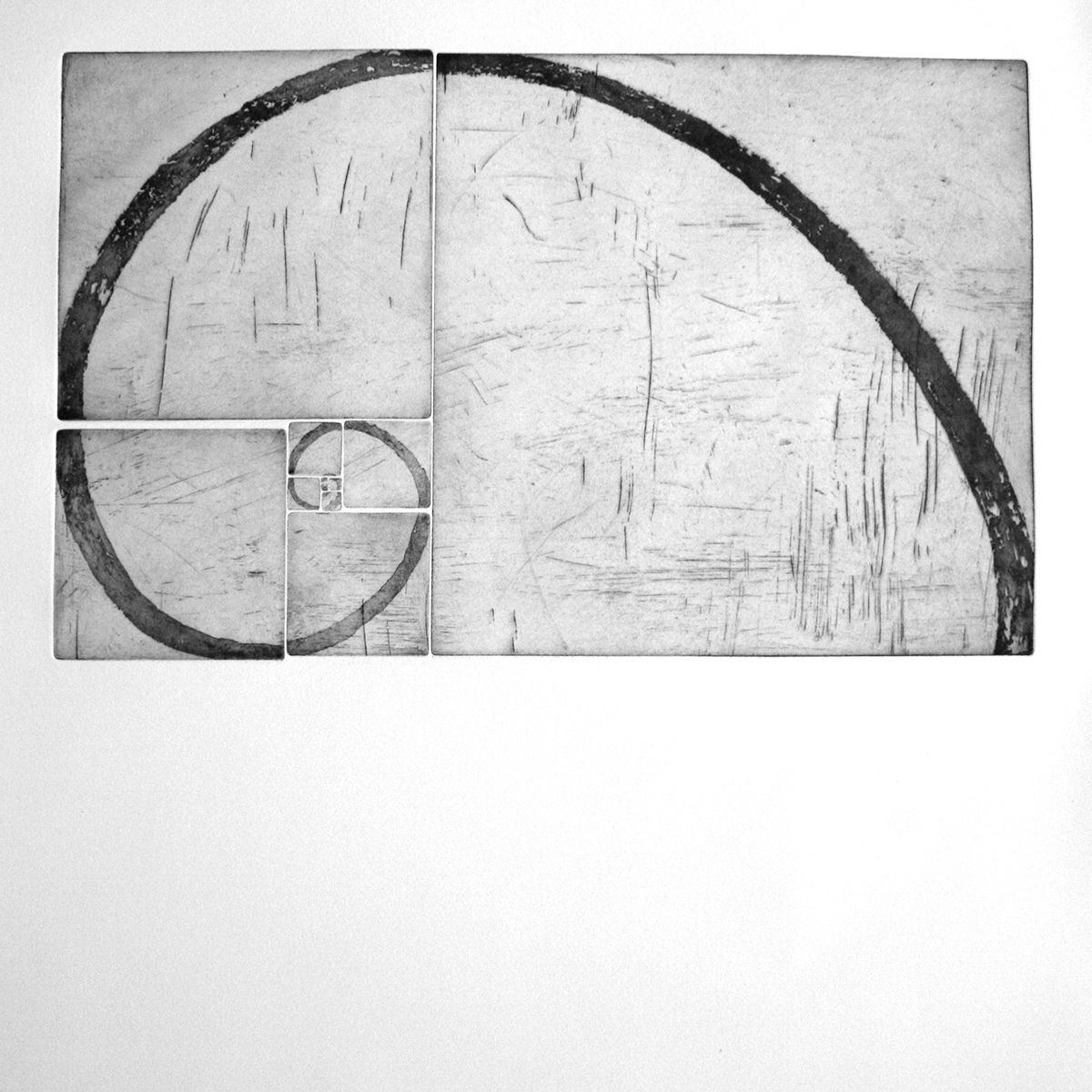
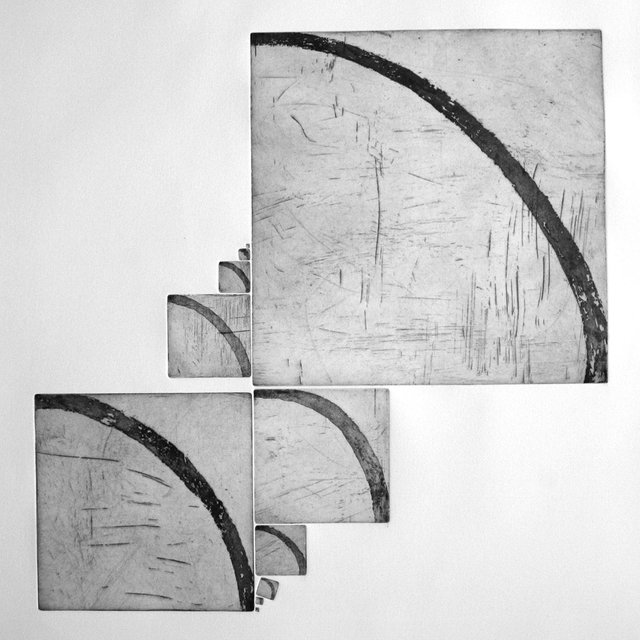
Let me know what you think of these prints in the comments below.
All feedback is welcome!

In general, I really like your design work but this has to be my favourite post of yours! First because I love the style of artwork.
Second, I love Escher. Have you ever been to the Escher museum? I came out of there with tears in my eyes.
Third, I've also been itching to look into print making for SO long now! I've read a lot about it but never actually tried anything so it's super cool to see your experiments. The Obama landscape is superb! I love discovering how so many elements around us are governed by the golden ratio so that one was a treat to see in print. I like the deconstructed version better.
Last but not the least - Britney.
Thanks so much for the support @manouche! You should definitely look into printmaking. Intaglio is unfortunately too complicated to do at home, but I’ve been looking more into printmaking with linocuts, which can be done with cheaper tools at home.
I’ve never been to the Escher museum but would love to go someday! He’s been one of my favorite artists since I was a kid.
I did a linocut workshop recently with Joelle Jolivet and it's super fun! I feel like the style is suited for children's books so it'll be interesting to see how to work with that. You should show us your experiments with it!
Ahh, you would love the Escher museum, then. On the list for 2018, maybe? ;)
These are truly awesome!
Hello, @erb
Your amazing post is selected to appear on @artshares, where we promote, support and help artists just like yourself reach a wider audience on the platform.
Join our project by adding hashtag #artshares in your posts, and receive a free upvote from us. Let's help artists grow on the Steem blockchain!
http://bit.ly/steemartshares
Thanks so much for the support @artshares!
I love printmaking too! I got my diploma in it at the Beaux Arts school in Paris. There is something so fine and delicate about the lines and the graphic possibilities. Aquatints were lots of fun too.
That's awesome. I feel like there's a whole world of printmaking I haven't tapped into yet. I just wish intaglio didn't require so many expensive tools because I'd love to get more into it on my own. I recently bought some linocut materials so I'm curious to see how it compares.
Linocut is fun, but you can't get the delicacy of an etching.